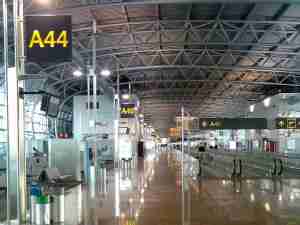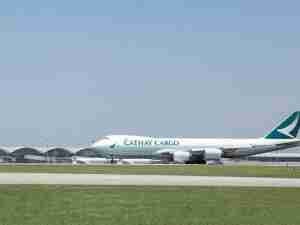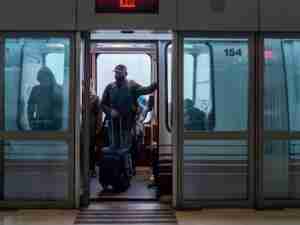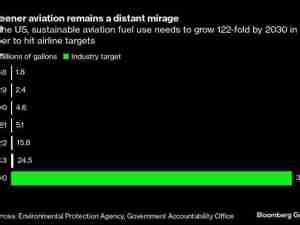Trump to Seek Spinoff of U.S. Air-Traffic Control From FAA
By: | Mar 16 2017 at 11:31 AM | Air Cargo
President Donald Trump is backing a controversial effort to place the U.S. air-traffic system under control of a nonprofit corporation as part of his budget plan.
The president’s position gives new momentum to a proposal endorsed by most carriers to spin off the Federal Aviation Administration’s system that oversees the nation’s airways. The effort failed last year in Congress, but will be reintroduced again this year.
A nonprofit corporation would be “more efficient and innovative while maintaining safety,” the administration said in a budget request to Congress being released Thursday. The document had few additional details about how the new organization should be set up and funded.
The budget blueprint calls for cutting overall funding next year for the Transportation Department, which is responsible for the nation’s highways, flight safety and railways. Under the plan, funding would be $16.2 billion, a cut of $2.4 billion or 12.7 percent compared to this year’s level set by Congress. It would trim unspecified funds from a part of Amtrak’s budget that pays for long-distance train service outside the corridor between Boston, New York and Washington. It would also resurrect the controversy over whether the U.S. should subsidize airline service at small, rural airports.
The lead proponent in Congress for removing air-traffic operations from the FAA praised Trump in a statement Thursday. Representative Bill Shuster, the Pennsylvania Republican who is chairman of the House Transportation and Infrastructure Committee, introduced a proposal to do that in 2015 and plans to attempt it again this year.
“I commend President Trump for his leadership in calling for restructuring the role of the FAA,” Shuster said. “This budget takes the next step in what our committee produced last year.”
Under Shuster’s plan, a board made up of airline and other aviation stakeholders would oversee a new air-traffic corporation. Instead of the current taxes on fuel and airline tickets, it would be funded by fees paid by aircraft operators. The FAA would continue to oversee safety and set aviation regulations.
The lawmaker said passengers would “see a more efficient system, flight times decrease, on-time departures increase, emissions reduced, and 21st century technology deployed to guide our planes from gate to gate.”
Airline Support
Shuster, most airlines and other industry advocates believe such a system would free the air-traffic system from congressional interference and what they see as a sluggish bureaucracy that has slowed introduction of new technology.
“This is a bold step that will lead to the governance and funding reforms needed to move our air traffic control infrastructure into the 21st century,” said Nicholas Calio, president and chief executive officer of the Airlines for America trade group. “Our system is safe, but it is outdated and not as efficient as it should—or could—be.”
A4A represents large airlines except for Delta Air Lines Inc., which split from the group because it disagreed with other carriers on the air-traffic debate. Delta has said it supports leaving the FAA in charge of guiding planes.
Opponents say the current system runs well and they object to paying new fees. Private-plane operators, many Democrats and some high-ranking Republican lawmakers who don’t want to lose direct oversight of that portion of FAA’s budget, have all come out against the plan.
The four leaders of the Senate Appropriations Committee, including Chairman Thad Cochran, a Mississippi Republican, on Feb. 28 wrote a letter saying they were against separating air-traffic from FAA. The agency has done a “commendable” job adopting new technology and it doesn’t “make sense to break apart the FAA,” the letter said.
Union Opposition
The National Business Aviation Association and a union representing FAA technical workers, the Professional Aviation Safety Specialists, both of which have opposed the move, didn’t immediately respond to requests for comment.
While the FAA hasn’t taken a position on the proposal, agency chief Michael Huerta defended its efforts to add new technology and improve efficiency in a speech March 2 before the U.S. Chamber of Commerce. The FAA estimates it already has delivered $2.72 billion in benefits to airlines with new flight routes and other technology, Huerta said.
The president in his budget request is also asking Congress to end to the FAA’s Essential Air Service program, which pays airlines to fly to airports that don’t have enough passengers to justify service. The program, favored by lawmakers in rural states, has contracts totaling $277 million at 113 airports, according to the Transportation Department.
2011 Shutdown
The FAA was partially shut down for about two weeks in 2011 after lawmakers feuded over the program and other issues and failed to pass a short-term budget for the agency.
The president’s budget calls for eliminating almost $500 million for a program started under President Barack Obama’s 2009 stimulus that awards annual grants to localities for road, rail, transit and port projects. The move is not inconsistent with Trump’s vow to invest $1 trillion to rebuild U.S. infrastructure, according to Mick Mulvaney, the White House budget director.
“That was done intentionally,” Mulvaney told reporters in a briefing on Wednesday. “We believe those programs to be less efficient than the infrastructure package.’’










